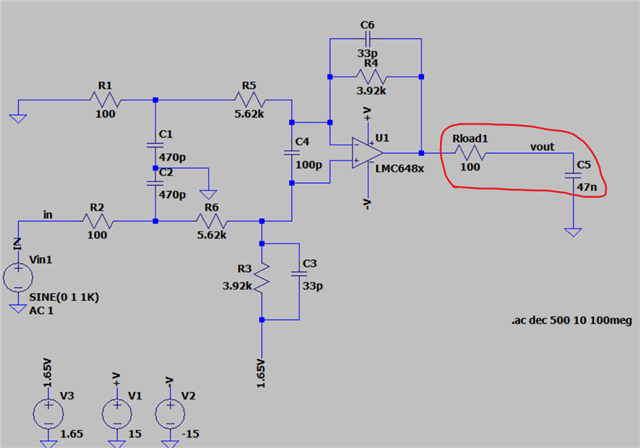Other Parts Discussed in Thread: OPA171, , OPA2171, OPA2172, LMC6484
Hi Expert,
My customer using OPA171/2 some many long time and they trying to search our LMC6482 on his new application.
But some behavior different between both device , so they have some question want to know more detail comment or feedback as below;
(1) The manual states that lmc6482 is a CMOS operational amplifier. What type of operational amplifier is OPA2171? What is the structural difference between the two? What should you pay attention to during use? What should be considered when selecting devices?
(2) Test the BODE diagram of the sampling circuit. The RC changes in the op amp output, such as 100R+47nF and 1K+4.7nF, have a greater impact on the LMC6482. But it has little impact on OPA2171 OPA2172.
I guess it has a lot to do with the internal structure of the op amp. I wonder what the difference is between the two?
(3) Vos of the op amp = 0.11mV. What is the role of the C4 capacitor and any helpful in here ?
(4) In the picture above, should C3 be connected to 1.65V or Gnd? What is the difference?

Eddie


